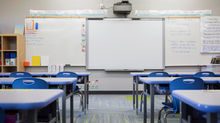Media Literacy
- Breanna Dixon
- Nov 5, 2017
- 2 min read

What is media literacy? Cindy Sheibe and Faith Rogow define it as, "the abilty (sic) to access, analyze, evaluate, and produce communication in a variety of forms" (12 Basic Ways to Integrate Media Literacy and Critical Thinking into Any Curriculum p 17). Media literacy can also be defied as generally knowing how to use different forms of media in different types of formats for different goals. Media literacy is becoming increasingly important in a world that is growing increasingly reliant on technology. As has been said before, the students we are teaching today are going to have jobs that do not even exist yet as technology becomes more advanced.
There are several different ways to encourage and teach media literacy in students. Having students analyze a document online or an article to look for bias or theme, talking about how the media can influence beliefs and what that looks like, the different ways data can be displayed and for what purposes, how to recognize reliable/unreliable sources online, producing their own online artifacts, discussing the role of media, and using media to assess their learning (Shiebe and Rogow) are all ways that teachers can help begin cultivating media literacy in students.

MediaSmarts is website targeted specifically to help teachers and families encourage media literacy within students. In fact, they've even created some sample lesson plans for teachers to use as a resource or to give them inspiration for how media literacy could be taught in their classrooms. The following is taken directly from MediaSmarts (2017):
Overview
In this lesson, students compare print and TV ads for the same product and discuss the advantages and disadvantages of each medium to communicate a particular message. The class then brainstorms a public service message and discusses which medium would be a better way to communicate it and why.
Learning Outcomes
Students will:
understand the key concept that each medium has a unique aesthetic form
identify the similarities and differences between different media
identify the advantages and disadvantages of using different media for a particular purpose
apply their understanding of the differences between media forms through the creation of a public service message (optional task)
In this lesson, students are given multiple learning outcomes that relate to media literacy. This example is a good way to show how media literacy could be taught. But, if you think that media literacy doesn't have to relate to content standards, that's not true either. The lesson example above could be modified so that their learning outcomes are to participate in a class discussion or perhaps they could look at historical ads for a history lesson. Media literacy does not have to happen only in a computer classroom or be about media literacy. The skills students attain from being a digital citizen could be used in service of content-specific standards in reading, language arts, science, math, and social studies. As technology is becoming increasingly important in this digital age, teachers can also adapt to include technology in their classrooms as well.
Resources:
Scheibe, C. & Rogow, F. (2008). 12 Basic Ways to Integrate Media Literacy and Critical Thinking into Any Curriculum (3rd ed.). Ithaca, NY: Ithaca College. Retrieved from http://www.projectlooksharp.org/12BasicWays.pdf
MediaSMarts. (2017). Media Literacy key concepts Lesson 6: Each medium has a unique aesthetic form. Retrieved from http://mediasmarts.ca/teacher-resources/media-literacy-key-concepts-lesson-6-each-medium-has-unique-aesthetic-form







Comments